Bitterballen, drop and stamppot
A new substack about Dutch food including smoked eel, meatballs and stampott
After a consecutive weekends in both Normandy (and we know how much I love that place !) then my new discovery, the beautiful and lesser known Lot region in the Midi-Pyrenees, my desire to live in rural France increased tenfold. Medieval villages, farmlands, roaring fires, markets heaving with the best of seasonal produce, what’s not to love ? And all those rolling green hills.. ahhhhhhh bliss.
So one could be forgiven for wondering why I would then jump on a train a week ago to spend time to visit a place that some refer to as “the Flatlands” but I lovingly call “the Homelands”. The reason that I can live in France is due to my very well travelled and slightly battered Dutch passport. This passport has allowed me to move around the world with great ease, working for Dutch Ambassadors to various countries. Along with my Australian passport, it might be my most treasured document.
My parents were both born in Holland, immigrating to Tasmania in 1964. But I neglected to apply for a passport before the fatal cut-off age of 28, whoops ! Speed ahead to 2003 and the Dutch government opened up a window to “reapply” for Dutch citizenship. With help from my employer at the time, the Ambassador for the Netherlands to the United Nations and his son, I spent months tracking down the vast reams of official documents to prove my eligibility. No easy feat, especially when names have been anglicised. Why say Johanna when you can say Anne? Gerard turns to George. But when you need proof that these people are one and the same … things, well, get a little dicey! Success came after six long months of an intense search for paperwork, I made it !
So when I come to Holland to visit the many friends and family that I have in this part of the world, I (re)discover what it is to be “Dutch”. I still have no real answer for it. I arrive and look at that pale blue sky with mottled puffs of white which take me straight to a Vermeer painting, no matter the time of year. I channel the little Dutch girl that grew up in Tasmania being made to wear Dutch national costume on multicultural days at school and somehow all that childhood embarrassment melts away. Context is everything and suddenly I understand my parents a little more, I am happy to speak my broken Dutch, and in the same way as when I go home to Tasmania, I am living that sky, breathing in the sea air that is Scheveningen and hankering after a bitterballen. In some way I am home.
And who doesn’t love a beef meatball with very little beef, held together with more roux than any self respecting French chef could imagine , then double breadcrumb coated and deep fried and served with mustard? I grew up making them, with my mum overseeing my sisters and I. One of us formed the balls from the giant pot of meat glue, another dipped them in flour, another managed the egg and breadcrumbs. And repeat, over and over! Let’s just say as kids, we never looked forward to these afternoons. But the finished product was worth it, sooo good ! Dipped in some spicy mustard, it’s deep fried crunchy heaven and a ticket straight back to childhood.! Pop it in a soft bread roll and it becomes a broodje kroket, a sure fire winner for lunch on a chilly cold day. It is so beloved by the Dutch that you can even find them in vending machines in train stations, truck stops and random street fronts.
They are also a staple in that other beloved Dutch institution, the snack bar. And it was here that I indulged in another favourite, filet americain! It has very little to do with anything American or even a filet. Rather it’s the much simpler Dutch version of the French steak tartare. Raw beef, very finely ground, (sometimes using veal as well) mixed with various seasonings such as paprika, onion and garlic powder and Worcester sauce. Also found in supermarkets and butcher shops (where the quality is much better - if in the The Hague try van der Zalm -a favourite of mine) on soft white puntjes (rolls) with chopped onion and salt and pepper. So good !
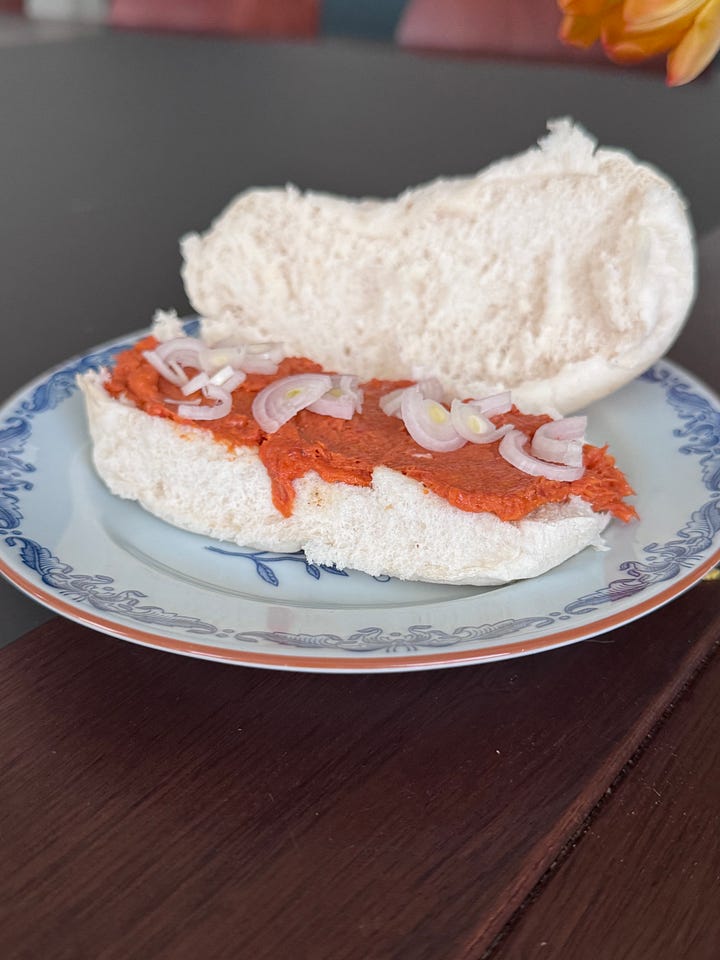

And then it was on to the real Dutch food, stamppot ! Roughly translated as mashed pot, it was a staple on our family table in Tasmania. A true farmer’s staple, a total comfort food. At its most basic, simply mashed potatoes with various vegetables mixed in, served with some sort of smoked sausage or meatballs. And it must not be a French potato puree - oh no ! There must be lumps and the “stamp” must have some butter and milk but not too much. This is farmer’s food and as someone in Holland once said to me when I made the almost unforgivable sin of trying to “chef up” the mash - “ What the farmer doesn’t know, the farmer wont eat” !! On my first night here, in Den Haag, we ate stamppot boerenkool, the mash mixed with bacon and finely chopped kale. until it almost becomes green. Traditionally it is eaten with wurst (a smoked sausage) and piccalilli, a kind of mustard pickle. Mustard and cornichons can be added as well. There are many varieties of stamppot, my favourite being stamppot andijvie,(this one I bought from Koot in The Hague) to be eaten with gehakt balletjes or meatballs. Your home region in Holland will influence the name of the stamppot. In The Hague, its stamppot peen and uien. This becomes stamppot hutspot in the east of the country where my parents grew up. For the non Dutch - this simply means its with carrots and onions. It’s my sister’s favourite !
I spent the weekend in Amsterdam, where I walked in the bitting cold around the lovely canals that define the city. Standing sentinel on these canals are typical Dutch houses, somber and restrained, typical of the Calvernist period in which they were built, each one leaning on the next for dear life in order to remain standing. I feel my ancestors dressed in the costumes of the time, wandering the streets back in the 18th century. It is easy to imagine fog filled nights and bells ringing, warning of incoming boats. And then I smelt a joint and heard an English accent and I remembered that I am in the 21st century after all.
Back in the Hague, there were more food indulgences, paling (smoked eel) Bossche bolletjes (a puff pastry cream filled chocolate ball) from the area of Den Bosch, in the south of Holland and of course, another favourite and perhaps my kryptonite - drop. To the uninitiated, this is Dutch liquorice. Whenever anyone from the Homeland visited Tasmania, salty dutch licorice and especially double zout (salt) was a compulsory offering. What makes it Dutch you ask? Well instead of being sweet, like your average liquorice allsort, these are salty and the nuanced saltiness is what makes them so special, so unique. There are plenty of examples of sweeter ones but the salt is always there. Whenever I gave it to my friends in Australia to try, I was met with horror (most people) or if the friend had northern European heritage, delight! It’s the one thing that I always ask people to bring from Holland. It’s the price of admission ! I can eat a whole packet in one sitting and whilst writing this, I have made a sizeable dent in two packets, (see photo below). Oops !
I have a few days left in Holland and whilst I still haven’t got to the cheese - (my waistline is really happy about this), I think I have scratched the itch of my favourite childhood foods. As a chef, one is constantly reminded of the importance of memory that comfort food can bring. And I have been lucky enough to have had that in spades, this last week x
Recipe : Stamppot boerenkool - or Dutch mashed potato with kale and sausage
500g of potatoes (those suitable for mashing is the best option here), peeled and roughly chopped
300g of finely chopped kale
125g speck blokjes, fried until crispy ( diced bacon)
50ml milk
25g of butter
Salt and pepper
1 teaspoon of mustard
a pinch of nutmeg
1 rookwurst
Method:
In a large pot, place the chopped and peeled potatoes with the kale and cover with water, adding salt to taste. Bring to the boil and cook until the potatoes are soft aproximatly 15 - 20 minutes. Strain and place the potatoes and kale mixture back in the pot. Roughly mash with either a potato masher or a fork but certainly not a sieve ! Lumps are part of what makes stamppot, stamppot ! Fold in the bacon, a teaspoon of mustard, the milk, butter and nutmeg and mix to combine. Check for seasoning.
Whilst the potatoes are cooking, place the rookwurst in an 80C degree water bath (the sausage comes wrapped in plastic - do not remove this) for the time it takes to make the stamppot. This will ensure that the sausage is heated through without it being over cooked. You dont want the skin to break.
Place the stamppot on a serving plate, take the sausage out of its plastic covering and serve a generous slice on top of the stampott.
Condiments that are traditionally eaten with the stamppot include picalilli, extra mustard, cornichons and/or Amsterdam onions ( known as sweet and sour onions - or pearl onions). You can mix and match to your heart’s desire.
You can also eat it with a very simple jus, or gravy. Remember simplicity is key here ! No fancy French sauces here !
photo courtesy of “ik kan koken” (1949)
Have a great week,
Kathxx





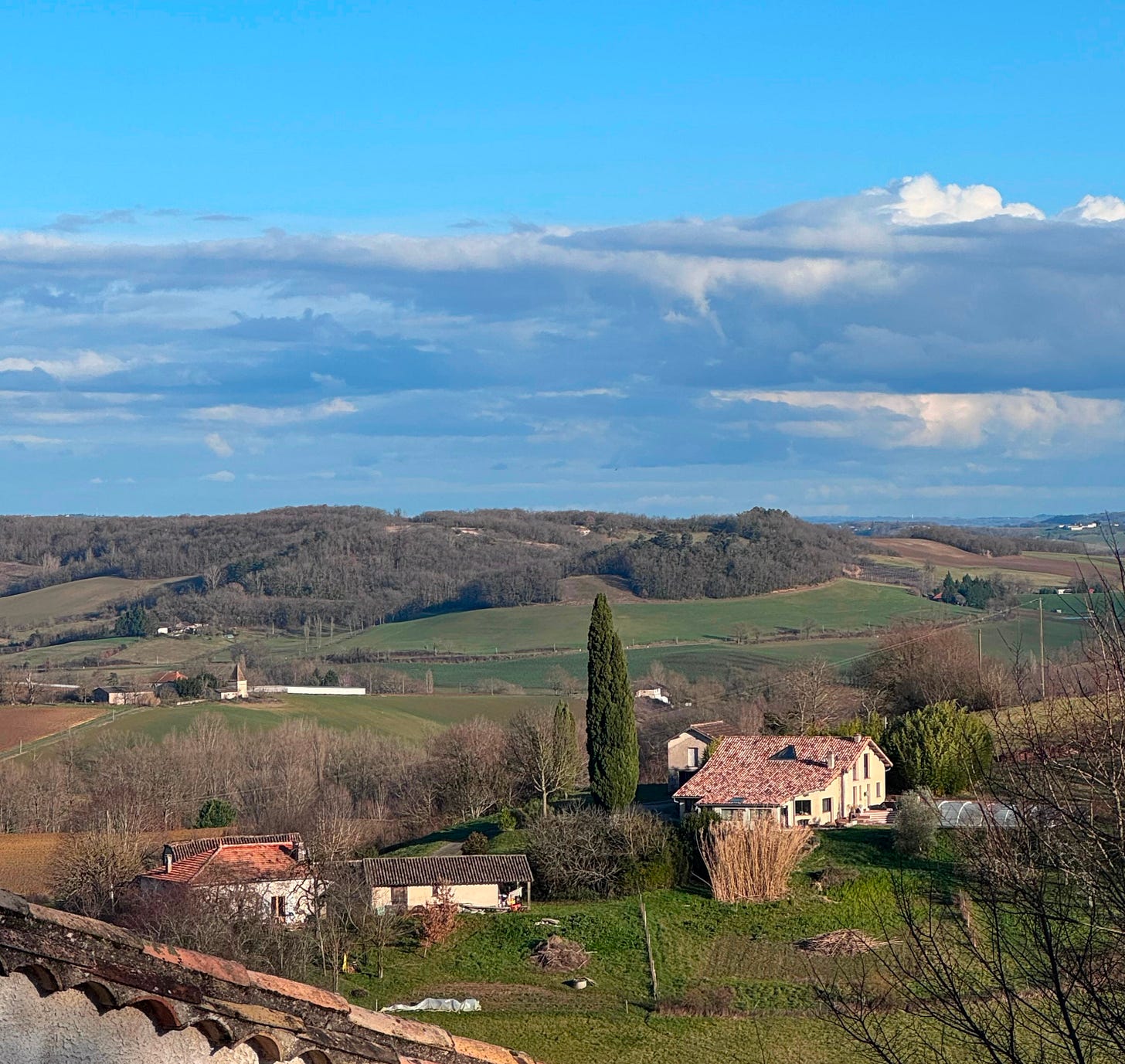
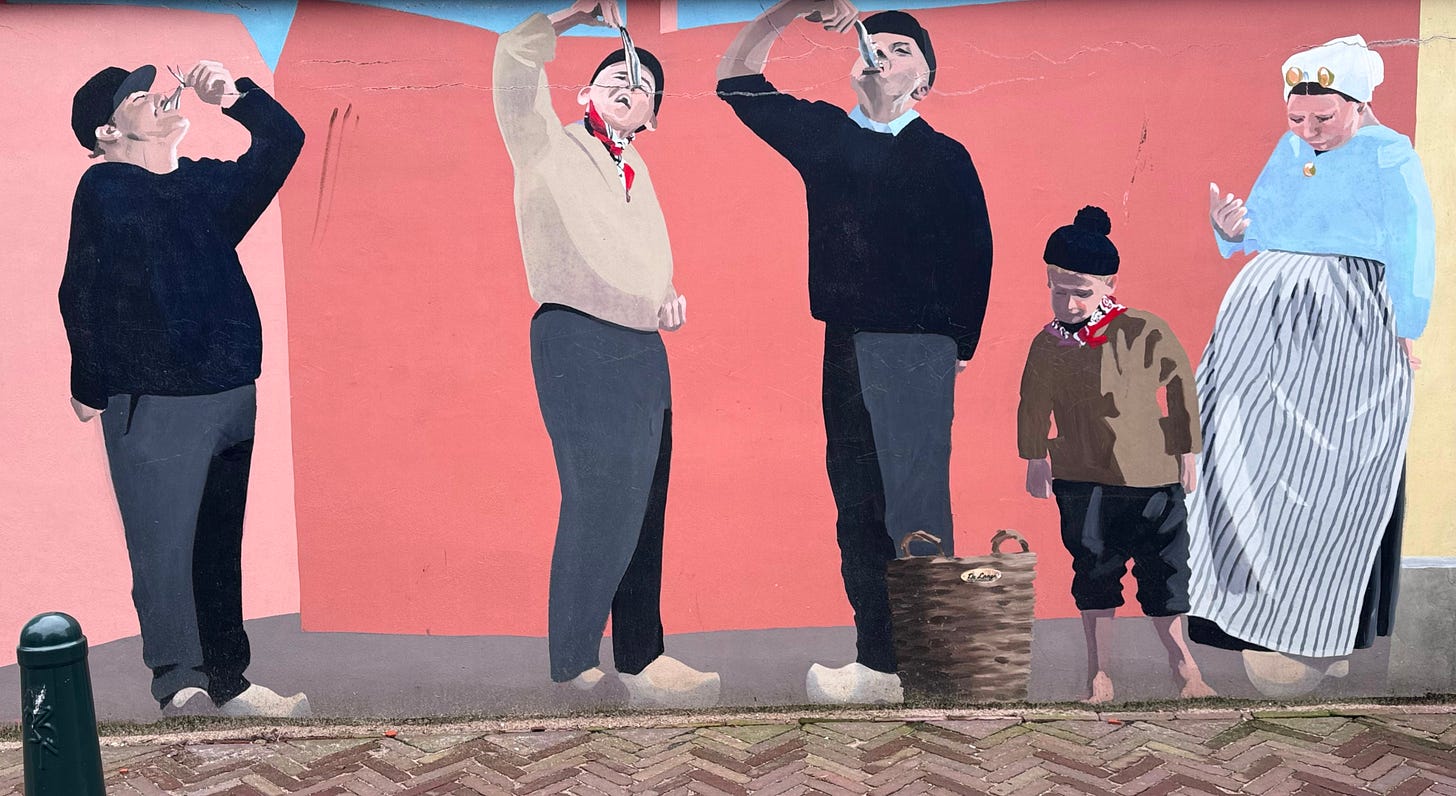
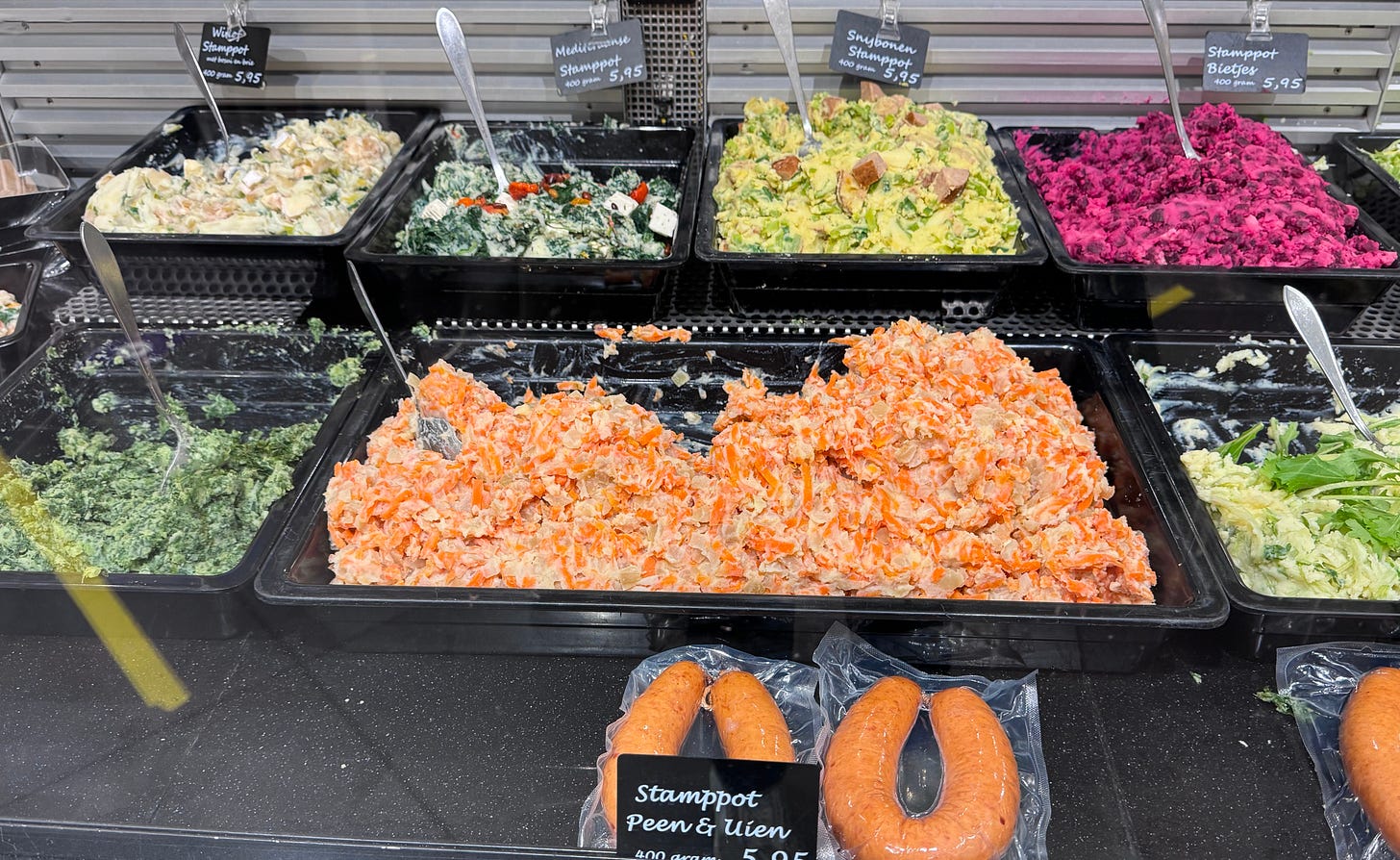
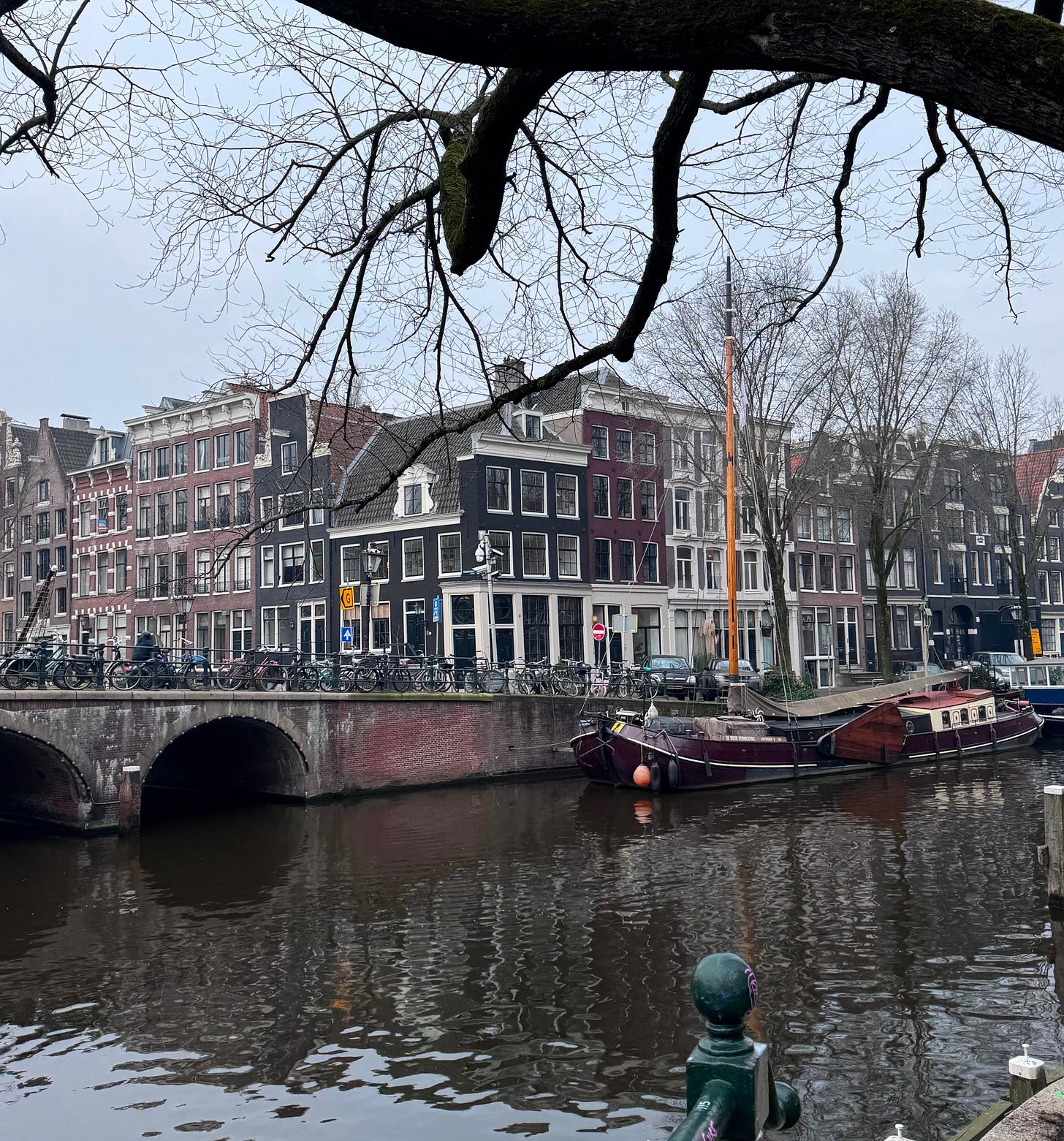
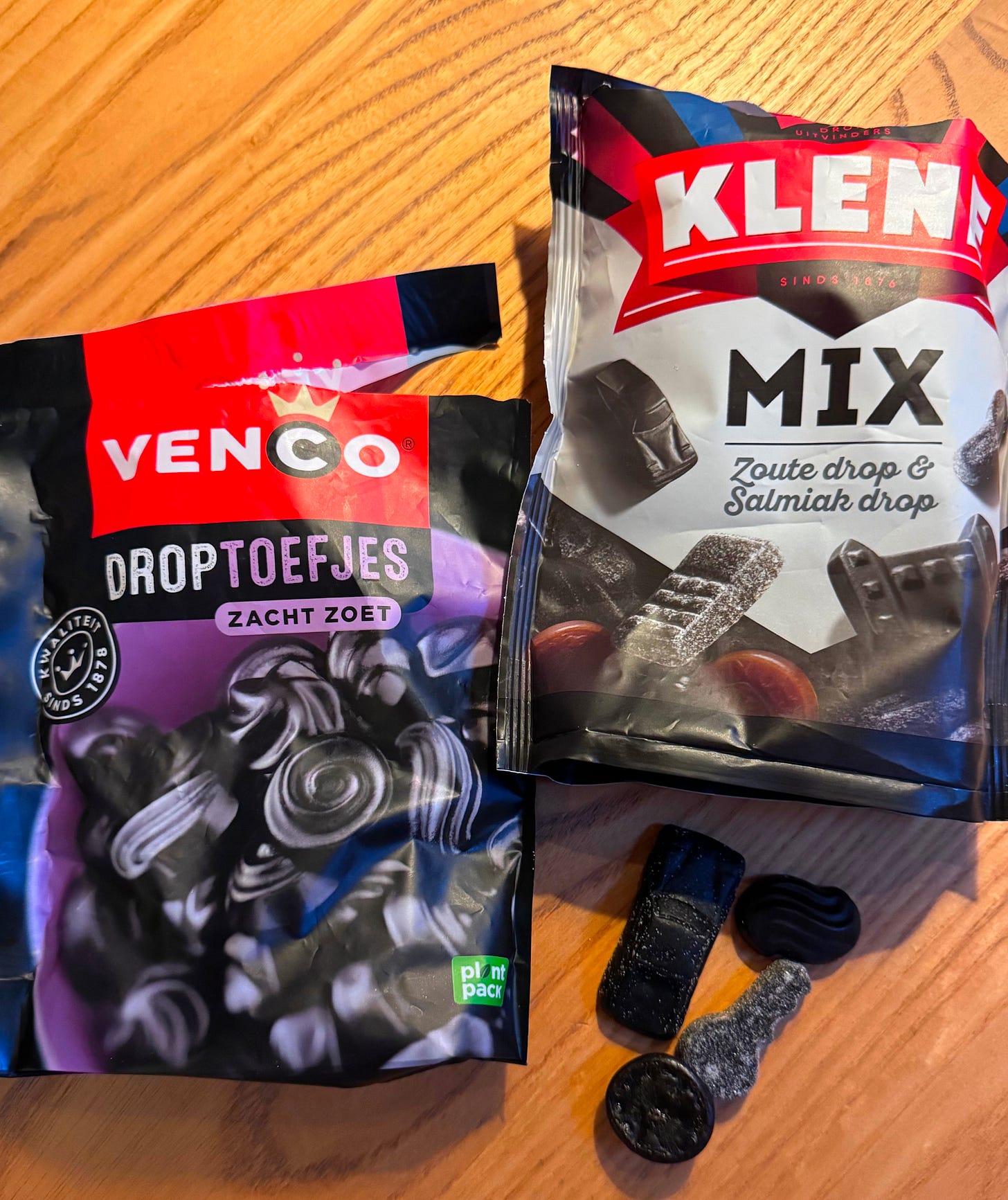
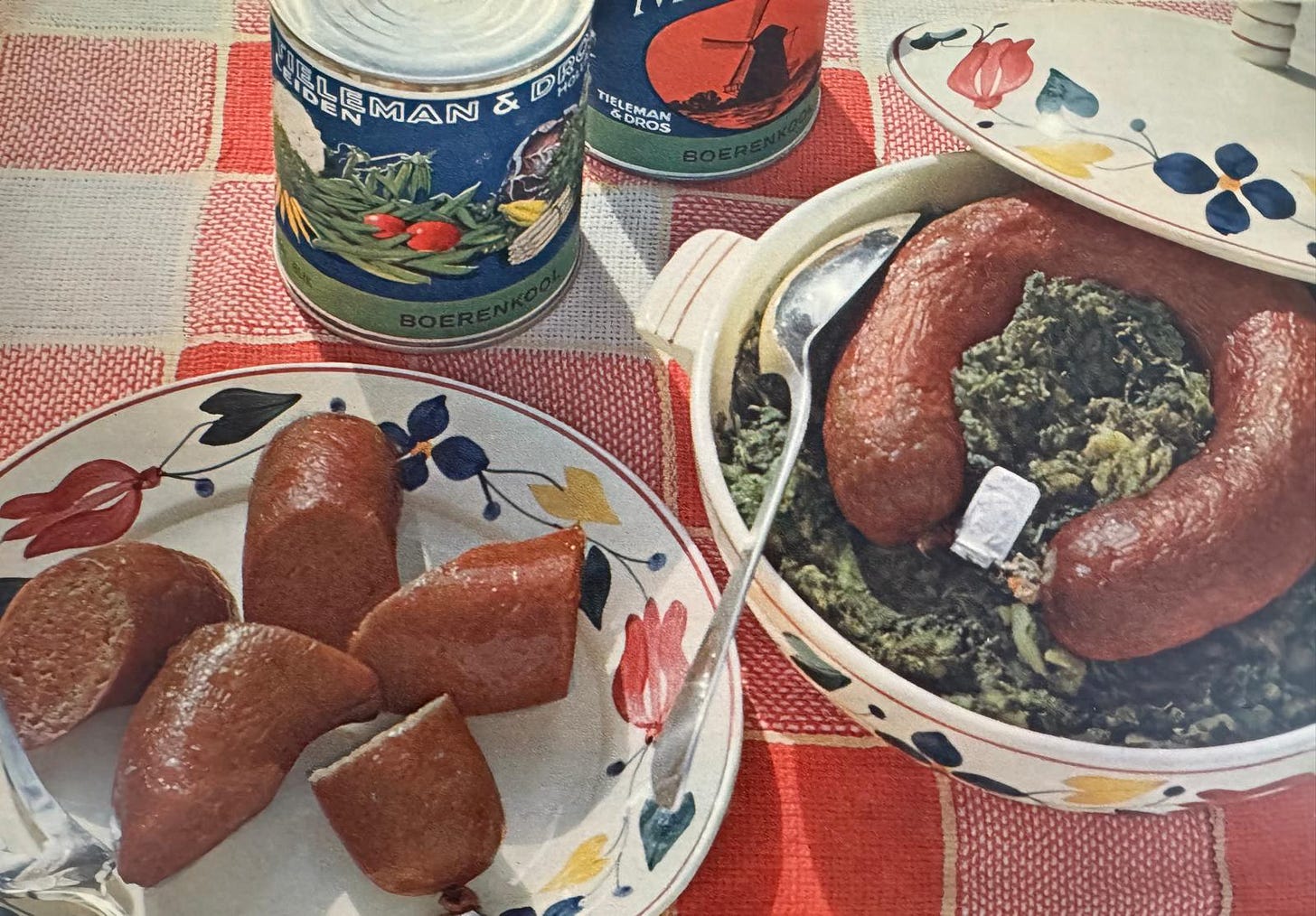
It is such a wonderful feeling to have such a good friend staying with us for a bit and especially her cooking skills we enjoy every day! We feel spoiled!